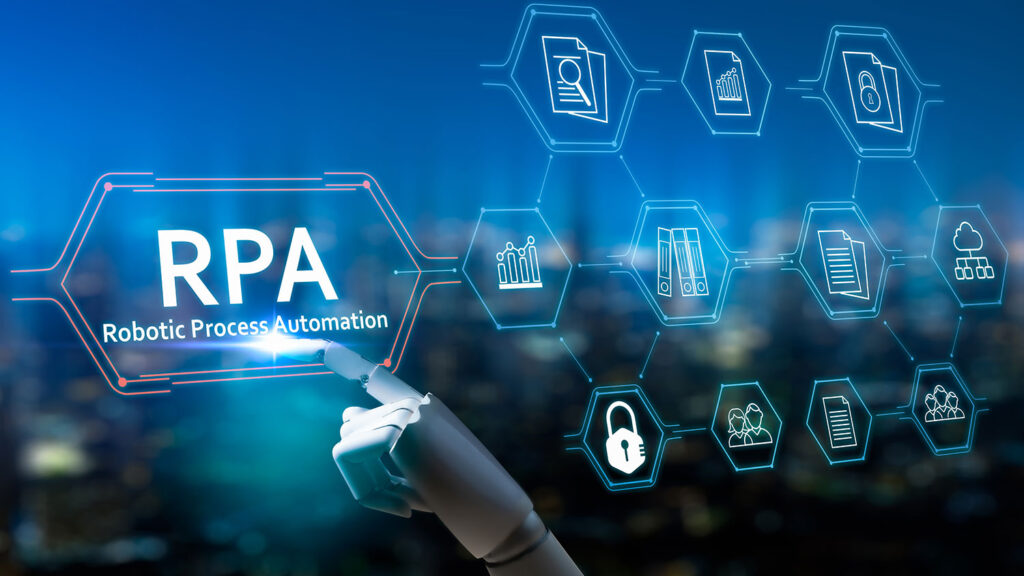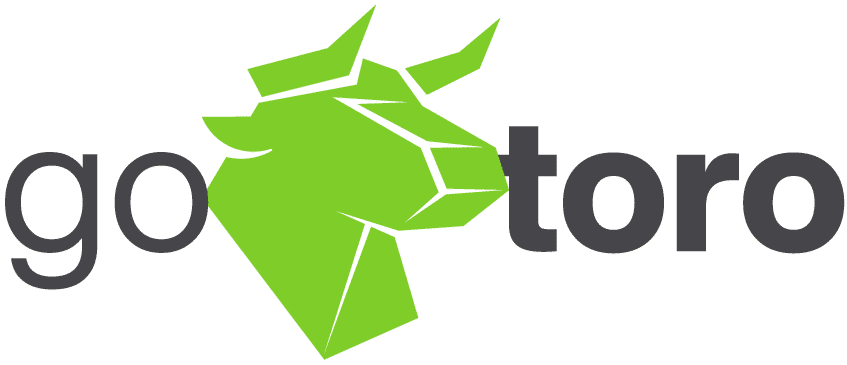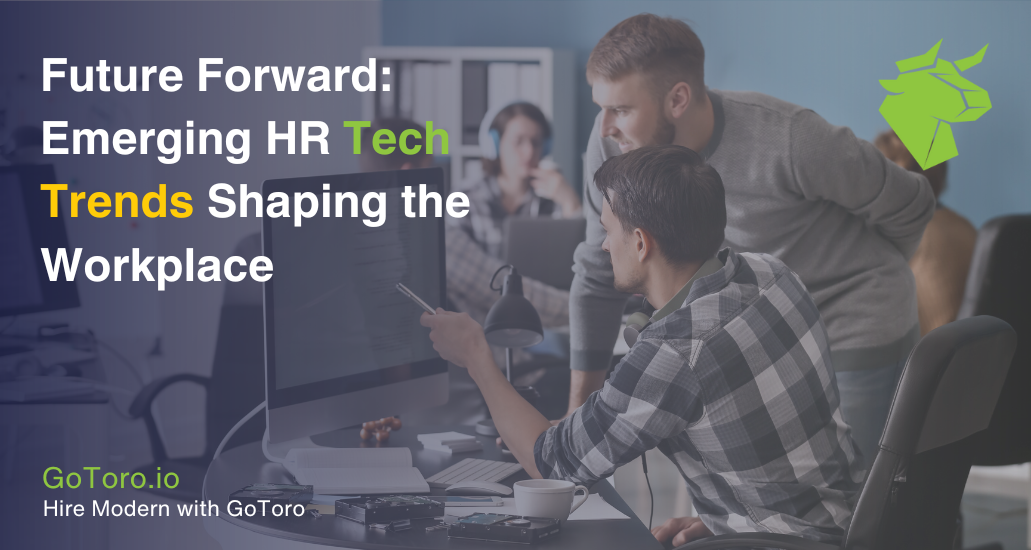The rapid evolution of HR technology is reshaping how organizations manage their workforce. As these HR technology trends continue to emerge, it’s crucial for HR professionals to stay informed and adopt the latest innovations. These trends are not only transforming daily operations but are also enhancing employee experiences and driving strategic business success. Understanding and integrating these HR technology trends will enable organizations to remain competitive in a rapidly changing business environment.
AI and Machine Learning in HR Technology Trends

Revolutionizing HR with AI and Machine Learning
Artificial Intelligence (AI) and Machine Learning (ML) are at the heart of the most transformative HR technology trends today. These technologies are not just automating routine tasks—they are redefining how HR departments function by providing deeper insights, enhancing decision-making, and offering predictive capabilities that were once unimaginable.
AI and ML are becoming indispensable tools for HR professionals, enabling them to focus more on strategic initiatives rather than being bogged down by administrative tasks. These technologies analyze vast amounts of data quickly and accurately, providing actionable insights that help organizations adapt to changing workforce dynamics. By harnessing the power of AI and ML, HR teams can better anticipate needs, mitigate risks, and enhance the overall employee experience.
AI-Powered Talent Acquisition
One of the most significant areas where AI is making an impact is in talent acquisition. This HR technology trend is revolutionizing the recruitment process by making it more efficient and effective. AI-powered tools are capable of automating candidate sourcing, screening, and matching processes, reducing the time and effort required to find the right talent.
Platforms like Pymetrics are leading the way in using AI to match candidates to jobs based on their emotional and cognitive abilities, rather than just their resumes. This approach not only improves the quality of hires but also promotes diversity by removing unconscious bias from the recruitment process. By leveraging AI in talent acquisition, companies can ensure they are not just filling positions, but finding the best fit for their organizational culture and long-term goals.
Furthermore, AI-driven tools can provide recruiters with deeper insights into candidate behaviors, preferences, and potential, allowing for a more personalized and candidate-centric approach to hiring. This HR technology trend is setting a new standard in recruitment, where speed, accuracy, and fairness are the key drivers of success.
Predictive Analytics for Strategic HR Decisions
Predictive analytics is another critical component of the AI-driven HR technology trends shaping the workplace. By leveraging AI and ML, predictive analytics tools can analyze historical data to forecast future trends, helping HR professionals make more informed and strategic decisions.
For instance, predictive analytics can be used to anticipate employee turnover by identifying patterns and risk factors that may lead to attrition. This allows HR teams to proactively address issues and implement retention strategies before problems escalate. Additionally, predictive analytics can identify training needs across the organization, ensuring that employees are continuously developing the skills necessary to meet future challenges.
According to Gartner, predictive analytics will become increasingly vital for strategic HR decision-making, enabling organizations to optimize workforce planning, manage talent more effectively, and align HR initiatives with business objectives. This HR technology trend is not just about reacting to data—it’s about using data to drive proactive, strategic actions that support the long-term success of the organization.
AI and Machine Learning are at the forefront of HR technology trends, offering tools that are transforming how HR departments operate. By automating routine tasks, enhancing recruitment processes, and providing predictive analytics, these technologies are empowering HR professionals to focus on what truly matters—building a dynamic, resilient, and engaged workforce that can thrive in a rapidly changing business environment.
Employee Experience Platforms in HR Technology Trends
The Rise of Employee Experience Platforms (EXPs)
As organizations increasingly recognize the importance of employee engagement and well-being, Employee Experience Platforms (EXPs) have emerged as a key HR technology trend. These platforms are becoming more sophisticated, integrating various HR functions into a seamless and holistic experience for employees. By centralizing tools for communication, learning, well-being, and feedback, EXPs are revolutionizing how employees interact with their work environment and how HR departments manage these interactions.
Holistic Employee Experience Platforms
A major focus of these HR technology trends is on creating holistic platforms that offer a unified experience for employees. Tools like Microsoft Viva and Qualtrics XM are leading the way in this domain, providing integrated solutions that encompass employee engagement, well-being, learning, and knowledge sharing. By consolidating these functions, these platforms ensure that employees have easy access to the resources they need, fostering a more engaged and productive workforce.
Microsoft Viva, for example, integrates with Microsoft Teams to provide a comprehensive employee experience that covers communication, collaboration, learning, and insights. This approach not only enhances the employee experience but also helps organizations to track and improve key metrics related to employee satisfaction and productivity.
Qualtrics XM, on the other hand, focuses on creating an integrated experience management system that collects and analyzes employee feedback in real-time. This allows HR teams to make data-driven decisions that improve the overall employee experience, from onboarding to career development.
The growing emphasis on Employee Experience Platforms reflects a broader HR technology trend towards creating a more connected and supportive work environment. As these platforms continue to evolve, they will play an increasingly important role in shaping the future of work, making it more adaptive, responsive, and employee-centric.
Virtual Reality (VR) and Augmented Reality (AR) in HR Technology Trends

Immersive Technologies Transforming HR
Virtual Reality (VR) and Augmented Reality (AR) are among the most exciting HR technology trends that are transforming how organizations approach training and onboarding. These immersive technologies provide innovative ways to engage employees, improve retention, and enhance the overall learning experience.
As the workplace continues to evolve, the use of VR and AR in HR processes is becoming more prevalent. These technologies offer immersive experiences that traditional training methods cannot match, making them invaluable tools for HR departments looking to improve employee engagement and retention.
Training and Development with VR and AR
One of the most significant applications of VR and AR in HR technology trends is in training and development. VR can simulate real-life scenarios, providing employees with a safe and controlled environment to practice skills and respond to challenges they may face on the job. For example, in high-risk industries such as healthcare or manufacturing, VR can be used to train employees on how to handle emergency situations without putting them in harm’s way.
AR, on the other hand, offers on-the-job assistance by overlaying digital information onto the physical world. This can be particularly useful for remote collaboration or for providing employees with step-by-step guidance as they perform complex tasks. For example, an AR headset could display instructions or diagrams directly in the user’s field of vision, allowing them to complete a task more efficiently and with fewer errors.
According to PwC, VR training can be more effective and engaging than traditional methods, leading to better retention of information and higher levels of employee satisfaction. This HR technology trend is particularly beneficial for companies with a distributed workforce or those that require specialized training for their employees.
The adoption of VR and AR in HR is still in its early stages, but as these technologies become more affordable and accessible, they are expected to play a significant role in shaping the future of workplace training and development. By providing immersive, hands-on learning experiences, VR and AR are helping organizations to better prepare their employees for the challenges of the modern workplace.
These HR technology trends underscore the growing importance of creating engaging, effective, and innovative employee experiences. As organizations continue to adopt these technologies, they will be better positioned to attract, retain, and develop top talent in an increasingly competitive landscape.
Hybrid Work Technology in HR Technology Trends
Collaboration Tools in Hybrid Work
As hybrid work becomes the new norm, the need for effective collaboration tools is one of the most significant HR technology trends shaping the workplace. Tools like Slack, Zoom, and Microsoft Teams have become essential for maintaining communication and collaboration across both remote and in-office teams. These platforms offer a range of features, including video conferencing, instant messaging, and file sharing, that help bridge the gap between distributed teams, ensuring that all employees can stay connected and productive, regardless of their location.
These collaboration tools are not just about facilitating communication; they also play a crucial role in fostering a sense of team cohesion and culture, which can be challenging in a hybrid work environment. By integrating these tools into daily operations, organizations can create a seamless communication flow that enhances collaboration and ensures that all team members are aligned with company goals and projects.
Virtual Offices and Digital Workspaces
Another emerging HR technology trend in hybrid work is the adoption of virtual offices and digital workspaces. Platforms like Gather and Sococo are creating virtual environments that mimic physical office spaces, allowing remote workers to experience a sense of presence and community similar to that of a traditional office.
These digital workspaces offer features such as virtual meeting rooms, collaborative whiteboards, and social spaces where employees can interact in real-time. This technology is particularly beneficial for companies with a fully or partially remote workforce, as it helps maintain a strong team culture and encourages spontaneous interactions, which are often lost in a remote work setting.
By leveraging these HR technology trends, organizations can better support their hybrid workforces, ensuring that all employees have the tools and environment they need to succeed, regardless of where they are working from.
Robotic Process Automation (RPA) in HR Technology Trends

Automating Routine HR Tasks with RPA
Robotic Process Automation (RPA) is another key HR technology trend that is transforming the way HR departments operate. RPA involves the use of software robots to automate repetitive and mundane tasks, allowing HR professionals to focus on more strategic initiatives that drive business growth.
One of the primary benefits of RPA in HR is its ability to significantly reduce the administrative burden associated with tasks like payroll processing, attendance tracking, and data entry. By automating these processes, organizations can increase efficiency, reduce errors, and free up valuable time for HR teams to engage in higher-level activities, such as talent management and employee engagement.
Efficiency Gains through RPA
The efficiency gains from RPA are substantial. According to McKinsey, automating routine HR tasks can lead to a significant increase in productivity and accuracy, as robots can perform these tasks faster and with fewer errors than humans. This HR technology trend is particularly valuable for large organizations with high volumes of transactional HR activities, where the time savings and accuracy improvements can have a considerable impact on overall business performance.
Moreover, RPA can be easily integrated with existing HR systems, making it a cost-effective solution for organizations looking to streamline their HR operations. As RPA technology continues to advance, we can expect to see even more sophisticated applications in HR, further enhancing the efficiency and effectiveness of HR departments.
People Analytics in HR Technology Trends
Advanced People Analytics for Workforce Insights
People analytics is one of the most powerful HR technology trends, offering organizations deeper insights into workforce trends, employee behavior, and overall organizational health. By leveraging data analytics, HR departments can make more informed decisions that drive business outcomes and enhance the employee experience.
People analytics tools collect and analyze data from various HR systems, providing HR professionals with a comprehensive view of their workforce. This data can be used to identify patterns and trends in areas such as employee engagement, performance, and retention, enabling HR teams to proactively address issues and implement strategies that improve overall organizational effectiveness.
Data-Driven Decisions in HR
As per Deloitte, the use of people analytics is becoming increasingly vital for HR leaders who want to make data-driven decisions. These tools allow HR departments to move beyond gut feelings and assumptions, providing them with concrete data that can be used to inform strategic initiatives. For example, by analyzing employee engagement data, HR teams can identify factors that contribute to high levels of engagement and replicate these across the organization.
In addition to improving decision-making, people analytics also helps HR professionals to demonstrate the value of HR initiatives to senior leadership. By quantifying the impact of HR programs on business outcomes, HR leaders can build a stronger case for continued investment in HR technology and programs.
As the use of people analytics continues to grow, it is becoming an indispensable tool for HR departments looking to optimize their workforce strategies and contribute to the overall success of the organization. This HR technology trend is set to play a critical role in shaping the future of human resource management, enabling organizations to create more effective, data-driven HR strategies that align with their business goals.
Diversity, Equity, and Inclusion (DEI) Tech in HR Technology Trends

Bias Identification and Mitigation through DEI Tech
As organizations strive to create more inclusive workplaces, Diversity, Equity, and Inclusion (DEI) technologies have become a crucial HR technology trend. These tools are designed to identify and mitigate biases in recruitment, promotions, and workplace culture, ensuring fairness and equity across all HR processes.
Tools like Textio and HireVue are at the forefront of this trend. Textio analyzes job descriptions to highlight biased language that may deter diverse candidates, offering suggestions to make the language more inclusive. Similarly, HireVue uses AI to evaluate interview processes, identifying and reducing biases that can creep in during candidate evaluations. By leveraging these DEI technologies, organizations can promote a more inclusive workplace culture that values diversity and equity, helping to build a workforce that reflects the diverse world we live in.
These HR technology trends are essential for fostering a more inclusive environment where all employees have equal opportunities to succeed, regardless of their background. As DEI tech continues to evolve, it will play an increasingly vital role in helping organizations meet their diversity goals and ensure that their HR practices are fair and unbiased.
Employee Well-being Technologies in HR Technology Trends
Mental Health Apps Supporting Employee Well-being
Employee well-being has emerged as a critical focus area within HR technology trends, with mental health apps becoming a key tool for supporting employees’ mental health. Apps like Headspace and Calm offer resources for stress management, mindfulness, and mental health support, integrating seamlessly with HR systems to track and promote employee well-being.
These apps provide employees with easy access to mental health resources, enabling them to manage stress, anxiety, and other mental health challenges more effectively. By incorporating these tools into their HR strategies, organizations can help ensure that their employees are not only productive but also mentally healthy and engaged.
Personalized Wellness Programs through Digital Platforms
Another significant HR technology trend is the use of digital platforms like Virgin Pulse to deliver personalized wellness programs. These platforms encourage healthy behaviors, such as physical activity, healthy eating, and mindfulness, by offering customized wellness plans tailored to each employee’s needs and preferences.
Virgin Pulse and similar platforms integrate with HR systems to track participation and outcomes, providing valuable insights into the overall health and well-being of the workforce. These programs are designed to boost employee engagement and satisfaction by supporting their physical and mental health, ultimately leading to a more productive and resilient workforce.
Holistic Approach with Digital Health Platforms
Digital health platforms like Limeade represent a holistic approach to employee well-being, integrating health data with HR systems to offer comprehensive wellness solutions. These platforms provide access to telemedicine, wellness resources, and personalized health insights, helping employees manage their health proactively.
By offering a wide range of health services in one platform, Limeade enables organizations to support their employees’ well-being more effectively, creating a healthier, more engaged workforce. This HR technology trend reflects the growing recognition that employee well-being is integral to organizational success.
Conclusion
The HR tech landscape in 2025 will be defined by advanced technologies that enhance efficiency, provide strategic insights, and improve the employee experience. By adopting these innovations, HR departments can better support their organizations and drive business success. Ready to see how these HR technology trends can benefit your organization? Request a demo from GoToro today and stay ahead in the evolving HR landscape.


